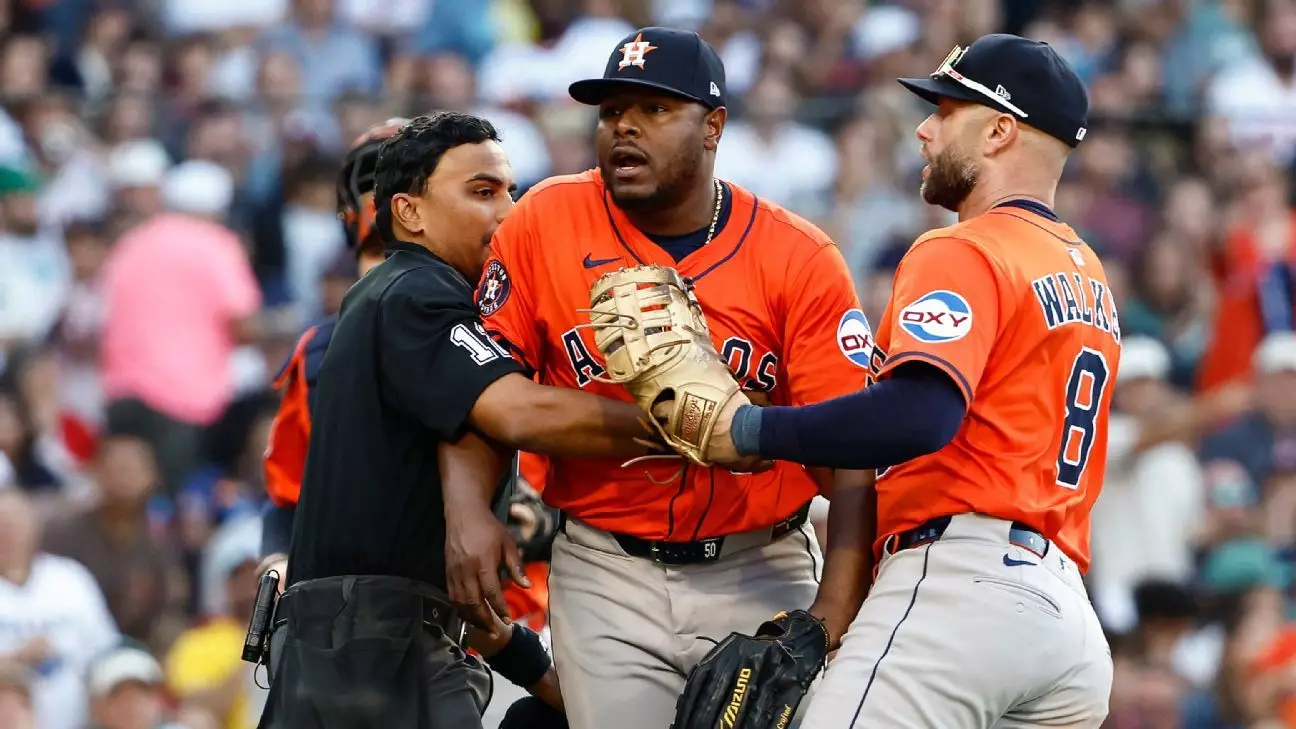Baseball has often been regarded as a game of skill, strategy, and tradition. However, recent incidents reveal that beneath its genteel exterior lies a battleground of subtle tactics and heated emotions. The confrontation involving Houston Astros reliever Hector Neris and Boston Red Sox coach Kyle Hudson exemplifies how competitive tensions can escalate into physical and verbal altercations, disrupting the flow of the game. Neris’s decision to use a balk — an action often seen as a defensive move or even a sign of frustration — to advance a runner reflects a maverick attitude that blurs the lines between strategic play and outright gamesmanship. His subsequent exchange with Hudson ignited a brief but intense melee that temporarily threw both teams’ focus away from the game itself.
This incident underscores the fragile equilibrium maintained during high-stakes games. When players or coaches perceive unfair advantage, especially after a controversial play or perceived signaling, tempers often flare. The exchange hints at deeper frustrations, possibly rooted in suspicions of illicit tactics like sign stealing, which have haunted Major League Baseball’s reputation for years.
The Shadow of Sign Stealing: Legacy of Distrust in Baseball
The mention of sign stealing in this context is more than just a passing remark; it echoes a dark chapter within baseball’s recent history. The Houston Astros’ past scandal, involving electronic sign stealing during their 2017 World Series victory, set a precedent for ongoing suspicion and rivalry. Though Major League Baseball introduced measures like PitchCom to prevent electronic espionage, the game remains vulnerable to covert communication methods, such as players reading catcher’s signs or baserunners decoding grip signals.
In this latest episode, Neris’s ambiguous comments about “maybe yes, maybe no” regarding sign stealing suggest lingering distrust. Players and coaches are acutely aware of the thin line separating tactical deception and outright cheating. When such suspicions surface, especially during contentious moments, it fuels an atmosphere of suspicion and potential conflict. The fact that managers like Alex Cora — linked historically to past scandals — deflect questions to the players highlights the ongoing uncertainty about integrity on the field.
The Role of Personnel and Historical Context
The broader implications extend beyond the immediate incident. Cora’s history with the Astros and subsequent role with the Red Sox adds layers of complexity to this incident. It raises questions about whether the underlying issues of sign stealing continue to influence team dynamics and perceptions of fairness. The clash also illustrates that while rules and technology can curb overt violations, the human element — including accusations, suspicions, and verbal confrontations — remains a powerful catalyst for discord.
This specific incident also demonstrates how the game’s leadership, from players to managers, navigates these choppy waters. Managers like Joe Espada and Cora are caught between protecting their teams and managing their reputations. Their responses— or lack thereof — reflect the sport’s ongoing struggle to maintain trust amid shadows of suspicion. As long as the game permits informational advantages—whether through electronic means or perceptive reads — such confrontations are likely to recur, each time reminding fans and officials that baseball’s charm is also its vulnerability.
In essence, this episode reveals that baseball is more than just a contest of bat against ball; it is a microcosm of human emotion, trust, and integrity. When lines are blurred, and suspicions arise, the sport’s true character is tested, challenging its foundational ideals of fairness and respect.


Leave a Reply